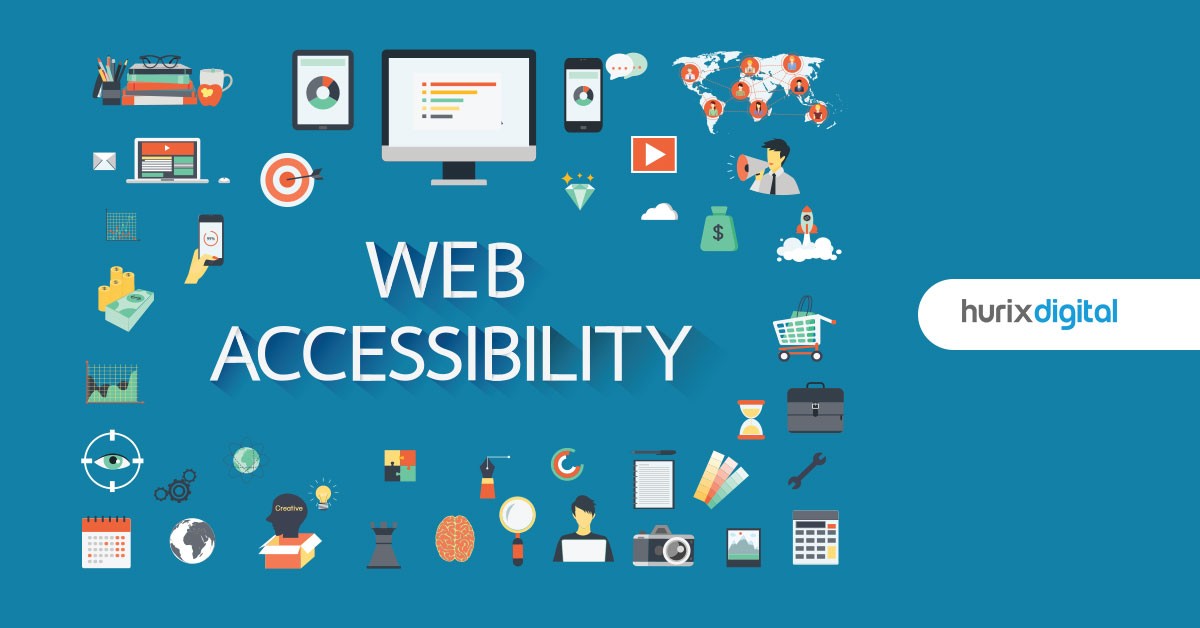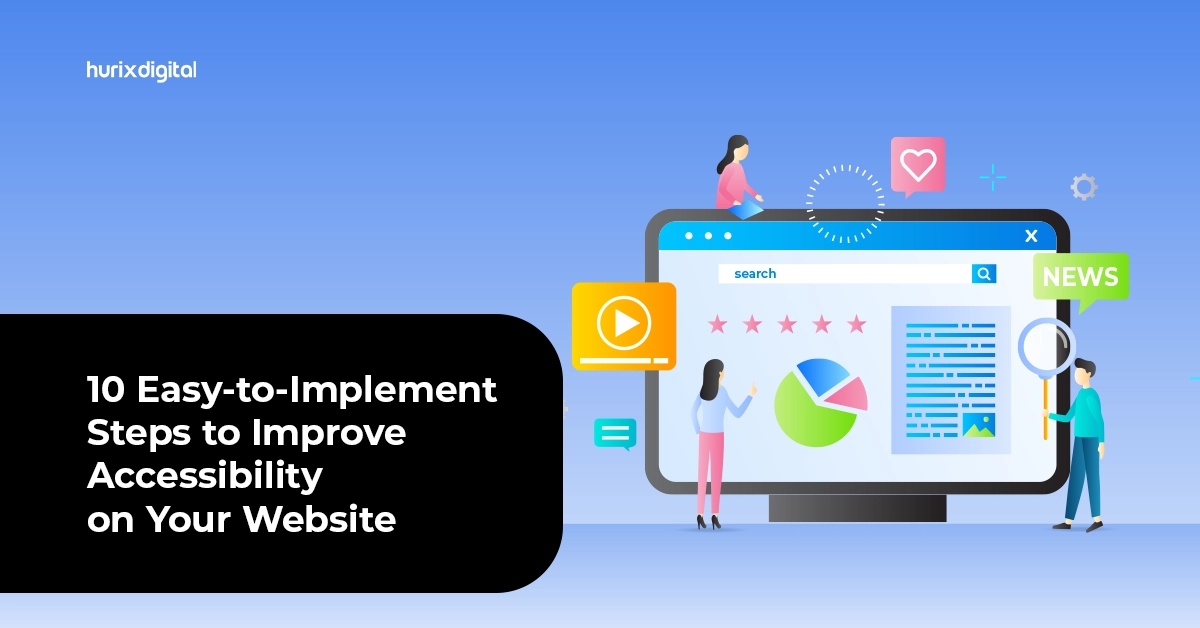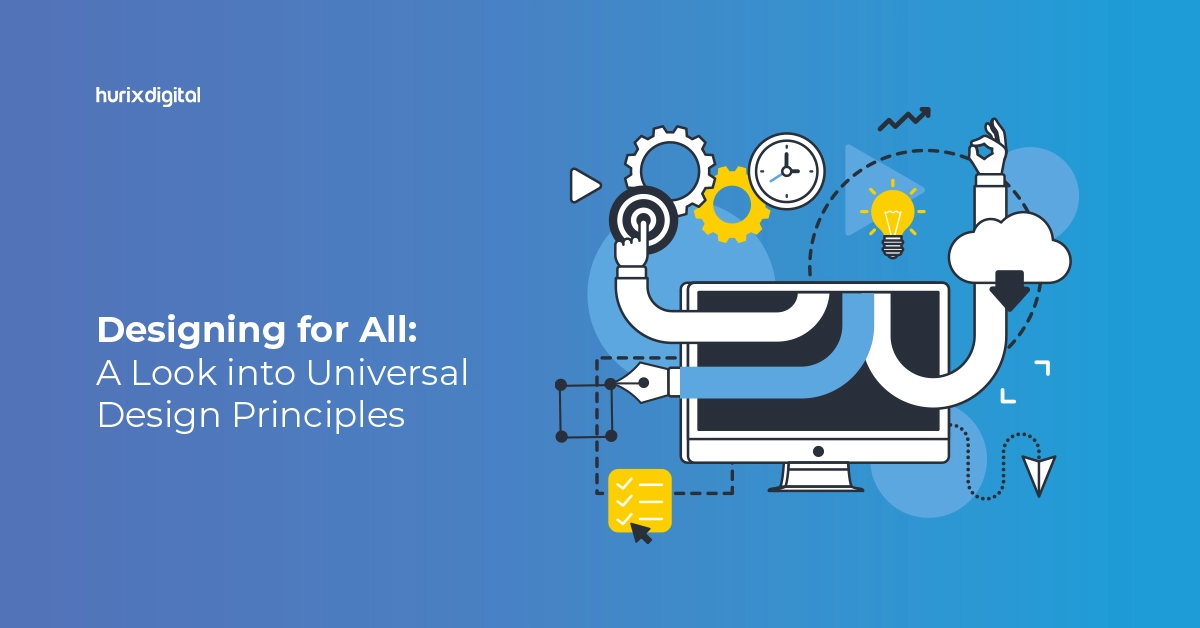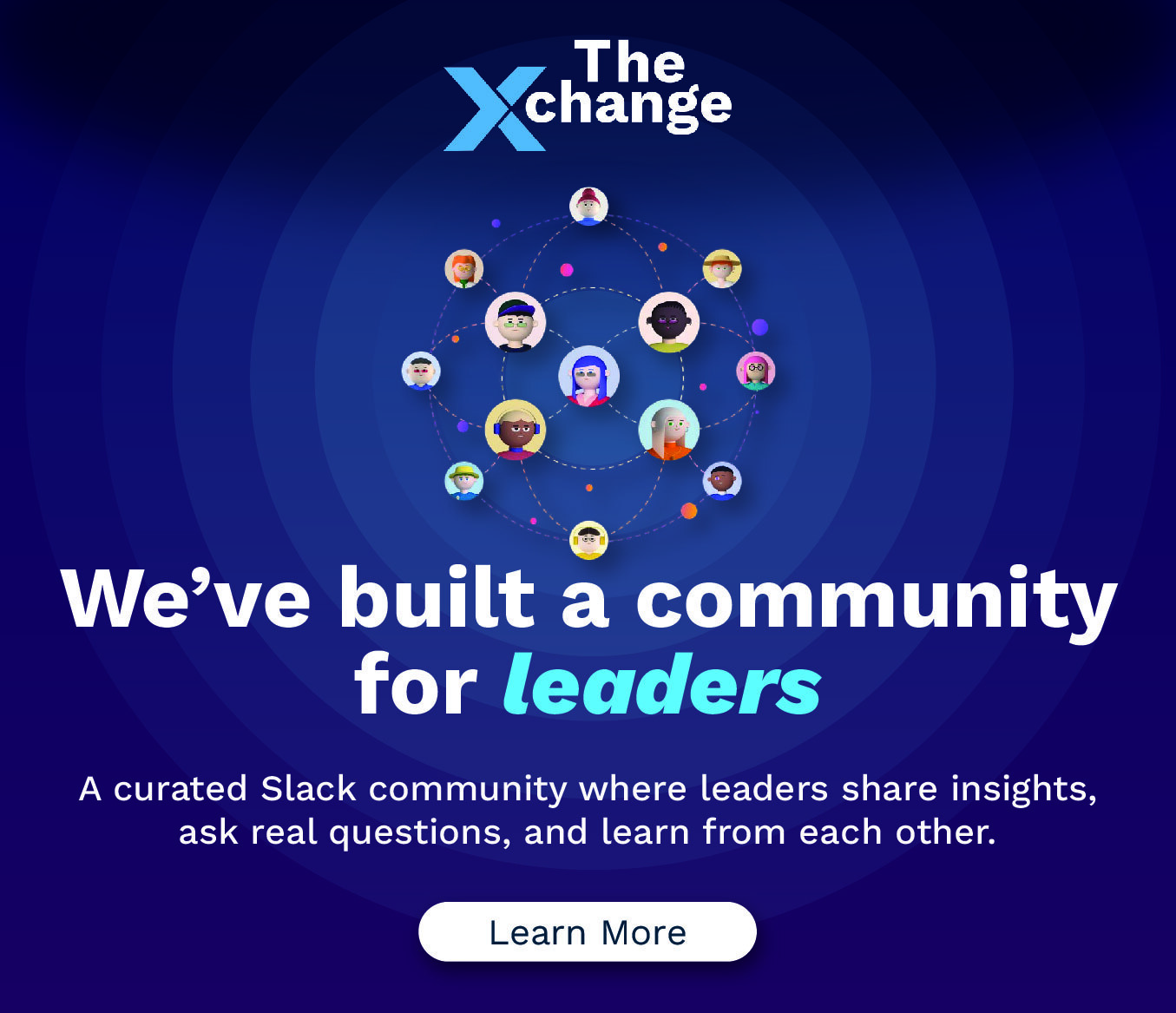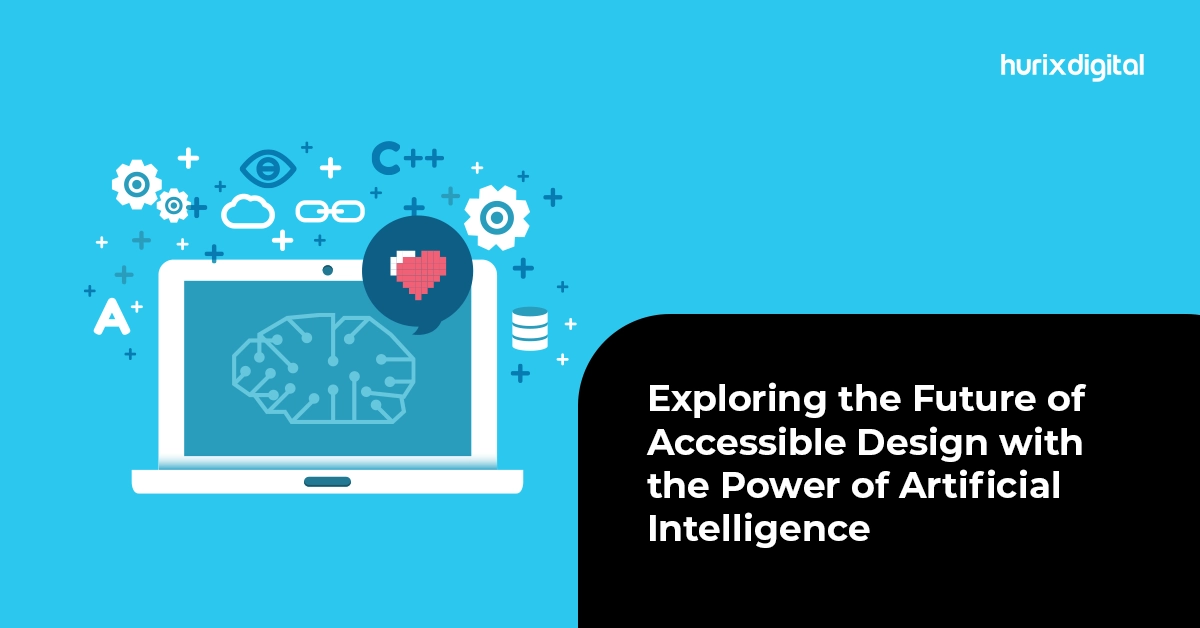
Exploring the Future of Accessible Design with the Power of Artificial Intelligence
Summarize with:
Did you know that people with disabilities make up 16% of the global population? This number continues to rise due to an aging population. However, the digital divide remains a significant challenge, as people with disabilities are less likely to get jobs compared to their counterparts without disabilities.
This highlights the growing need for Artificial Intelligence (AI) to play a pivotal role in shaping the future of accessible design. The integration of AI-powered accessibility solutions is transforming the way we approach digital design, making it more inclusive and user-friendly for individuals with diverse needs.
In this blog, we will explore the various aspects of AI in accessible design, from its benefits to challenges and opportunities.
Table of Contents:
- The Impact of AI on Accessible Design
- Ethical Human-Centered Design in AI
- Challenges in AI-Driven Accessibility
- Opportunities in AI-Driven Accessibility
- Conclusion
The Impact of AI on Accessible Design
One of the key areas where AI is making a significant impact is in the field of content accessibility. Here are some of it’s impact:
1. Automatically Generate Alternative Text for Images
AI can automatically generate alternative text (alt-text) for images, enabling visually impaired users and those with cognitive disabilities to comprehend visual content. This technology is being integrated into platforms like Microsoft Seeing AI, Google Photos, and Adobe Sensei, making it easier for content creators to ensure their digital assets are accessible.
2. Enhance Content Accessibility
AI-powered screen readers can provide real-time transcription and audio descriptions for multimedia content, empowering individuals with visual or hearing impairments to engage with digital content more effectively. This technology is transforming the way we design inclusive experiences across various digital platforms, leveraging AI in design to prioritize digital accessibility.
3. Personalize Assistive Solutions
As AI continues to advance, it is enabling the development of inclusive technologies that cater to the unique needs and preferences of individuals with disabilities. These tailored solutions can significantly enhance the user experience and improve the overall quality of life for those with diverse abilities.
4. Revolutionize Assistive Technologies
AI-driven assistive technologies are revolutionizing the way people with disabilities interact with their environments. Devices like OrCam MyEye and Envision, which leverage computer vision and AI, can help visually impaired users navigate their surroundings, read text, and identify objects. Innovation in accessibility is not only improving the quality of life for individuals with disabilities but also fostering a more inclusive digital ecosystem.
Also Read: The Beginner’s Guide to Accessibility Remediation – What You Need to Know!
Ethical Human-Centered Design in AI
As AI-driven powered solutions continue to evolve, it is crucial to ensure that they are developed with ethical and human-centered design principles in mind. The Partnership on Employment & Accessible Technology (PEAT) has released the Equitable AI Playbook, which provides guidelines for creating inclusive AI that considers the diverse needs of people with disabilities.
This approach emphasizes the importance of involving individuals with disabilities in the design and development process, ensuring that their perspectives and requirements are reflected in the final product. By adopting this collaborative and inclusive mindset, organizations can create AI-powered accessibility solutions that truly meet their users’ needs.
Incorporating inclusive design principles and user testing with diverse groups of individuals with disabilities can provide valuable insights into the usability and effectiveness of AI-powered accessibility solutions.
Challenges in AI-Driven Accessibility
While the potential of AI-driven accessibility is undeniable, there are also challenges that need to be addressed. Some of the primary ones include:
1. Ensuring Accessibility of AI-powered Tools
One of the primary challenges is ensuring that the AI-powered accessibility tools themselves are accessible and inclusive. These tools must be designed with the diverse needs of users in mind, considering factors such as language, cultural differences, and varying levels of digital literacy.
2. Addressing Algorithmic Bias
Another challenge is addressing algorithmic bias within AI-powered accessibility solutions. Ensuring that these tools provide fair and unbiased outcomes for all users, regardless of their background or abilities, is essential for creating truly inclusive technologies.
3. Data Privacy Concerns
Data privacy concerns pose a challenge in AI-powered accessibility, as the collection and processing of sensitive user data raise ethical considerations. Safeguarding user privacy while leveraging AI for accessibility solutions requires robust data protection measures and transparent data handling practices.
4. Integration with Existing Systems
Integrating AI-driven accessibility solutions with existing digital platforms and technologies can be challenging. Ensuring seamless compatibility and interoperability while maintaining accessibility standards is crucial for a cohesive user experience across different platforms.
5. User Acceptance and Adoption
Encouraging user acceptance and adoption of AI-driven accessibility tools presents a challenge, as users may be hesitant to embrace new technologies or may face barriers in accessing and utilizing these tools effectively. Educating users and promoting the benefits of AI-driven accessibility can help overcome these challenges.
Opportunities in AI-Driven Accessibility
Despite these challenges, the opportunities presented by AI-driven accessibility are immense. Here are some of these opportunities:
1. Advancements in Personalized Assistive Technologies
AI advancements present opportunities for developing personalized assistive technologies that cater to the unique needs and preferences of individuals with disabilities. Tailoring solutions to individual requirements can significantly enhance user experiences and improve accessibility in various contexts.
2. Innovative Solutions for Intelligent Content Adaptation
AI offers opportunities for creating innovative solutions that intelligently adapt content to meet the diverse needs of users with disabilities. Dynamic content adaptation based on user preferences and accessibility requirements can enhance the usability and inclusivity of digital content.
3. Enhanced User Engagement through AI
AI-driven accessibility solutions provide opportunities for enhancing user engagement and interaction with digital interfaces. Features such as voice commands, predictive text input, and personalized recommendations can empower users with disabilities to navigate digital environments more efficiently.
4. Collaboration for Inclusive Design
Opportunities exist for collaboration among AI researchers, accessibility experts, and the disability community to co-create inclusive AI-driven accessibility solutions. By involving diverse stakeholders in the design and development process, organizations can ensure that their solutions meet the needs of all users effectively.
5. Continuous Improvement and Innovation
The evolving nature of AI presents opportunities for continuous improvement and innovation in accessibility solutions. By staying abreast of technological advancements and user feedback, organizations can iterate on their AI-driven accessibility tools to enhance usability, effectiveness, and inclusivity.
Also Read: How to Create an Accessible Brand in 2024 and Beyond?
Conclusion
The integration of Artificial Intelligence (AI) in the field of accessible design is a game-changer, paving the way for a more inclusive digital landscape. By embracing this transformative technology and championing inclusive design, we can create a world where everyone, regardless of their abilities, can thrive and succeed.
At Hurix Digital, we excel in empowering organizations with innovative technologies for a standout digital presence. Our focus on accessibility and user-centric design drives inclusive digital experiences. By leveraging cutting-edge AI, Hurix Digital becomes a key partner for businesses embracing accessible design.
Take the next step towards a more inclusive digital future with Hurix Digital.
Summarize with:

Vice President – Content Transformation at HurixDigital, based in Chennai. With nearly 20 years in digital content, he leads large-scale transformation and accessibility initiatives. A frequent presenter (e.g., London Book Fair 2025), Gokulnath drives AI-powered publishing solutions and inclusive content strategies for global clients
 A Space for Thoughtful
A Space for Thoughtful 

